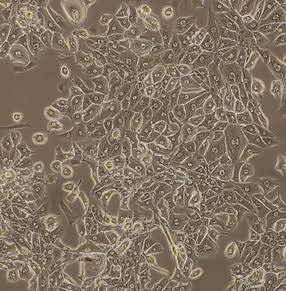Biomolecular Engineering
Biomolecular engineering is an interdisciplinary field that integrates principles from biology and chemical engineering. It focuses on designing, manipulating, and analyzing large biological molecules, such as proteins, lipids, and nucleic acids, as well as small molecules like pharmaceuticals. This discipline plays a crucial role in developing novel biological therapeutics and biomaterials while also advancing the use of microorganisms for creating valuable products. Within the Chemical and Biomolecular Engineering department at Lafayette, research in this area focuses on the development of protein-functionalized nanoparticles, biopolymer-based scaffolds for tissue engineering, stem cell models for drug toxicity testing, and innovative approaches to resource recovery through microbial processes.
Biomodeling Lab
 We tackle one of the major challenges in modern medicine: accurately predicting if a new drug is safe and effective for humans. Traditional models, like animal testing, do not properly mimic human biology, making them less accurate. To solve this, we use stem cells to build miniature human tissues that enable human-specific toxicity testing and disease modeling. We are particularly focused on bioengineered models of the human heart and use high-speed imaging and other advanced techniques to examine how our bioengineered hearts react to drugs on a molecular, electrical, and mechanical level. Our goal is for these models to accelerate the discovery of the next generation of safe and effective medicines and chemicals.
We tackle one of the major challenges in modern medicine: accurately predicting if a new drug is safe and effective for humans. Traditional models, like animal testing, do not properly mimic human biology, making them less accurate. To solve this, we use stem cells to build miniature human tissues that enable human-specific toxicity testing and disease modeling. We are particularly focused on bioengineered models of the human heart and use high-speed imaging and other advanced techniques to examine how our bioengineered hearts react to drugs on a molecular, electrical, and mechanical level. Our goal is for these models to accelerate the discovery of the next generation of safe and effective medicines and chemicals.
Environmental Microbiology and Resource Recovery Lab (EMRRL)
 Our lab is at the forefront of innovative research aimed to transform waste streams into product streams. We harness the power of common bacteria to liberate bound phosphorus from wastewater treatment plant biosolids, with the goal of recovering it to use as a fertilizer. In conjunction with our phosphorus recovery efforts, we also focus on extracting polyhydroxyalkanoate (PHA) from the spent bacteria. PHA is a biodegradable polymer, produced in the cytoplasm of certain bacteria, that can serve as an eco-friendly alternative to conventional plastics. By converting waste biomass into this valuable polymer, we aim to promote sustainable biopolymer production that could significantly reduce plastic pollution.
Our lab is at the forefront of innovative research aimed to transform waste streams into product streams. We harness the power of common bacteria to liberate bound phosphorus from wastewater treatment plant biosolids, with the goal of recovering it to use as a fertilizer. In conjunction with our phosphorus recovery efforts, we also focus on extracting polyhydroxyalkanoate (PHA) from the spent bacteria. PHA is a biodegradable polymer, produced in the cytoplasm of certain bacteria, that can serve as an eco-friendly alternative to conventional plastics. By converting waste biomass into this valuable polymer, we aim to promote sustainable biopolymer production that could significantly reduce plastic pollution.